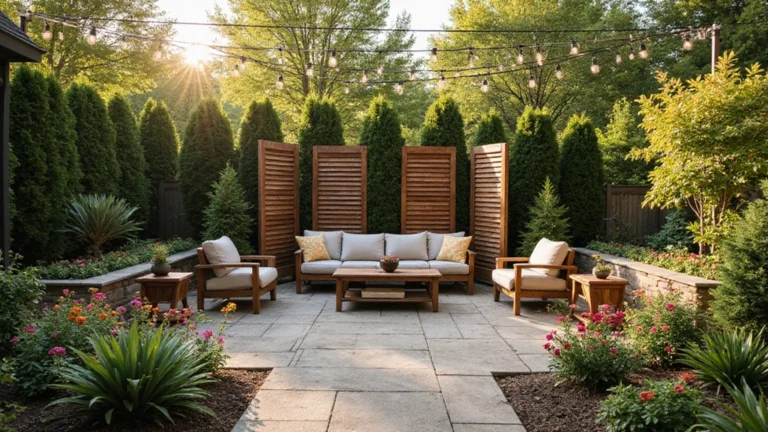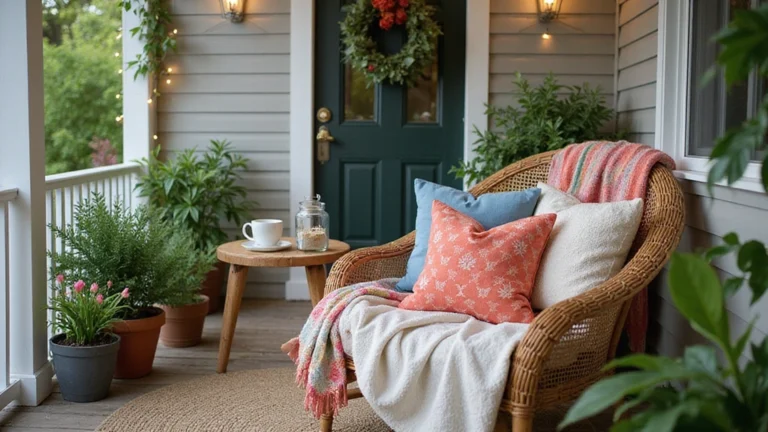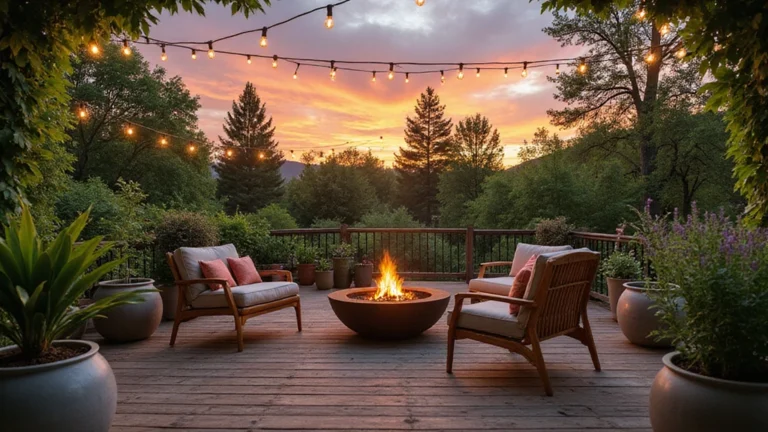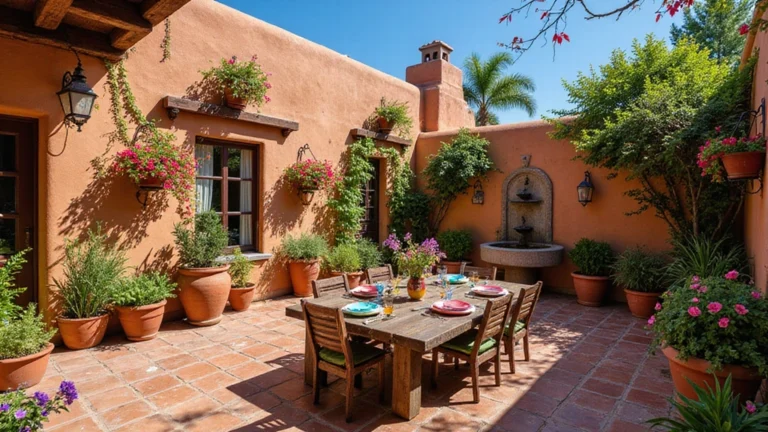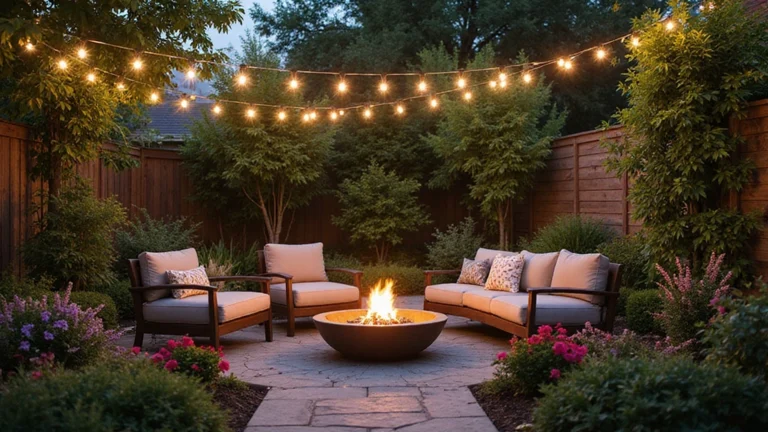22 Creative Front Walkway Ideas to Enhance Curb Appeal
Your front walkway is the handshake of your home — it’s the first impression guests get before they even step inside.
A well-designed walkway doesn’t just lead people to your door; it tells a story about your style, your taste, and the level of care you put into your space.
According to the National Association of Realtors, homes with appealing exteriors and upgraded walkways can boost curb appeal by up to 15% and even increase property value by 7–10%.
1. Natural Stone Walkway
A natural stone walkway is timeless, elegant, and durable. Stones like flagstone, slate, or bluestone blend seamlessly with outdoor landscapes while offering texture and natural beauty. Each stone’s unique pattern gives your path a custom look — no two walkways are ever identical.
Natural stone paths work especially well with gardens and lawns because they integrate smoothly with greenery.
The rough surface also provides excellent traction, making it safe in rainy or snowy weather. While stone may cost more upfront, it can last for decades with minimal maintenance — a solid investment in both form and function.
2. Brick Walkway Charm
Brick walkways evoke a sense of classic sophistication and old-world charm. They’re perfect for traditional homes or those looking to add a warm, inviting aesthetic. You can lay bricks in several patterns — herringbone, basket weave, or running bond — to create visual interest.
Beyond beauty, bricks are eco-friendly, as they can be reused and recycled easily. They’re also low maintenance, requiring only occasional cleaning and weed control between joints. A brick walkway pairs beautifully with wrought iron fences and neatly trimmed hedges, giving your home an elegant curbside presence.
3. Concrete with a Twist
Gone are the days when concrete meant dull gray slabs. Today, stamped, stained, or polished concrete can mimic high-end materials like stone or tile — at a fraction of the cost. You can choose from countless patterns and colors to create a walkway that perfectly complements your home’s exterior.
Stained concrete can bring warmth and depth, while stamped concrete adds texture and pattern. It’s durable, versatile, and budget-friendly — no wonder it’s one of the most popular walkway materials among homeowners.
4. Gravel Path with Edging
A gravel walkway offers a laid-back, rustic feel that suits cottage, farmhouse, or Mediterranean-style homes. It’s one of the easiest and most affordable walkways to install, and it gives that satisfying crunch underfoot every time you walk on it.
The key to keeping it neat is using sturdy edging materials — metal, wood, or stone — to contain the gravel. Adding stepping stones or pavers can help guide the way and prevent tracking stones into the house. It’s a cost-effective option that looks polished with proper design.
5. Paver Patterns for Personality
Pavers come in endless styles, shapes, and colors — offering flexibility to design something truly unique. From hexagonal patterns to sleek linear layouts, pavers can transform a simple path into a showpiece.
Interlocking pavers are especially durable and easy to repair. If one gets damaged, you can simply replace that piece instead of redoing the entire walkway. Pavers also resist shifting and cracking better than poured concrete, making them an excellent long-term investment.
6. Stepping Stone Walkway Through Grass
If you love a natural, whimsical look, stepping stones set in grass are a charming option. They create the illusion of a secret garden path — inviting yet subtle.
For a seamless blend, choose irregularly shaped stones spaced comfortably for walking. You can also use ground cover plants like creeping thyme or moss between the stones for added softness. This style works beautifully for front yards with lush lawns or garden borders.
7. Wooden Boardwalk Path
A wooden walkway can bring warmth and texture, particularly in homes surrounded by greenery or near water. Use treated lumber, cedar, or composite decking to ensure longevity and resistance to rot.
Wood paths have a natural flow that feels inviting. They also work well for uneven terrain since they can be built above ground. Pair your wooden walkway with solar path lights for a cozy, evening glow — think of it as your own mini boardwalk retreat.
8. Mosaic Tile Walkway
If you want to turn your front path into a piece of art, try a mosaic tile walkway. Using colorful ceramic or glass tiles, you can create patterns, symbols, or abstract designs that showcase your personality.
This idea works best for smaller walkways, as intricate tile designs can get expensive and require regular upkeep. However, the visual impact is unbeatable. A well-designed mosaic can make your home stand out instantly.
9. Pebble and Stone Mix
For texture lovers, a pebble and stone walkway offers a dynamic combination of smooth and rough surfaces. You can use large flat stones as stepping areas surrounded by smaller decorative pebbles for contrast.
This design not only looks great but also improves drainage, preventing puddles from forming during rain. It’s ideal for areas with frequent wet conditions. Plus, it gives your walkway a natural, beachy feel — as if each step leads to the ocean.
10. Modern Geometric Concrete Slabs
For contemporary homes, large geometric concrete slabs are the ultimate statement. Wide, evenly spaced rectangles or squares laid over gravel or grass look clean, modern, and intentional.
You can accentuate the spaces between slabs with crushed rock, turf, or low-maintenance ground covers. This sleek, minimal design aligns perfectly with modern architecture, offering both form and function.
11. Curved Walkway Design
Who says a path must be straight? Curved walkways add intrigue and flow to your front yard. They feel more organic and inviting, encouraging a slow stroll to the front door.
Curves also make small yards look larger by creating the illusion of depth and dimension. Use materials like brick, flagstone, or pavers to enhance the natural, fluid design. It’s a simple way to turn your walkway into a scenic journey rather than a direct route.
12. Cobblestone Walkway for Vintage Appeal
A cobblestone walkway instantly adds European charm. The irregular stones and aged texture exude history and elegance. While cobblestone can be pricey and labor-intensive to install, its durability is unmatched — some cobblestone streets in Europe are centuries old.
It’s best for homes with classic, colonial, or vintage aesthetics. Pair it with lantern-style lighting for an old-world feel that makes every evening walk feel like a stroll through history.
13. Garden-Integrated Path
Combine your walkway with your garden for a lush, immersive experience. Let flowers, shrubs, or ornamental grasses line the sides of your path, creating a soft border that transitions seamlessly from lawn to entryway.
Planting fragrant varieties like lavender or jasmine enhances the sensory appeal. This approach works best for wide paths where greenery can grow without crowding the walkway. It’s like having a living frame around your home’s entry.
14. Lighting That Leads the Way
Walkway lighting isn’t just about safety — it’s about setting the mood. Well-placed lights can highlight textures, guide visitors, and make your home look inviting after dark.
Consider solar path lights, recessed step lighting, or lantern fixtures along the edges. Studies show that homes with good exterior lighting have 20% higher curb appeal and improved security. A well-lit path ensures your home shines day and night.
15. Mix and Match Materials
Who says you must choose just one material? Combining different textures — like brick borders with concrete slabs, or stone pavers surrounded by gravel — creates visual interest.
Mixing materials can also help you stay within budget while achieving a high-end look. It’s a chance to get creative, blending contrasting tones or finishes to reflect your personality.
16. Stamped Brick or Stone Patterns
If you love the look of brick or stone but not the maintenance, consider stamped concrete patterns. Modern stamping techniques can replicate natural materials so well that you’d have to touch them to notice the difference.
It’s cost-effective, durable, and customizable. You can choose colors and patterns that match your exterior decor while enjoying easy upkeep.
17. Eco-Friendly Permeable Walkway
Sustainability is more than a buzzword — it’s smart design. Permeable walkways use materials like porous pavers, gravel, or eco-stones that allow water to filter through instead of running off.
This prevents erosion, reduces flooding, and supports healthy soil. As an added benefit, many municipalities now offer rebates for eco-friendly landscaping. Your walkway can look good and do good for the planet.
18. Rustic Log Slice Path
For nature enthusiasts, a log slice walkway offers rustic charm and creativity. You can repurpose old logs by cutting them into thick rounds and embedding them in soil or gravel.
Seal the wood to prevent decay, and you’ll have a one-of-a-kind path that feels straight out of a woodland cottage. It’s an eco-conscious and budget-friendly idea that’s surprisingly durable with proper care.
19. Path with Built-In Planters
Imagine a walkway that doubles as a mini garden. Built-in planters along your path edges let you add greenery without needing separate garden beds.
Use tall planters for symmetry or low, integrated ones for a subtle, modern aesthetic. Plant seasonal flowers or evergreens for year-round color. This idea creates a natural flow from walkway to entryway while keeping your curb appeal blooming.
20. Crushed Shell or Coral Walkway
For coastal homes or anyone dreaming of seaside vibes, a crushed shell walkway is an excellent choice. It’s bright, eco-friendly, and low maintenance.
Shells compact over time, creating a stable walking surface that reflects light beautifully. They’re also a sustainable option, often made from reclaimed shells. Pair with beach grasses and driftwood accents for a relaxed coastal charm.
21. Walkway with Water Features
Why not make your path an experience? Adding small fountains or water channels along the walkway brings sound, motion, and tranquility.
The gentle sound of flowing water can reduce stress and enhance your home’s serenity. While it requires a higher budget and maintenance, it turns your front yard into a personal oasis.
22. Walkway with Integrated Seating
Finally, consider adding benches or built-in seating along your front walkway. It encourages people to linger, chat with neighbors, or simply enjoy the view.
You can build seating into retaining walls or place standalone benches along curved paths. It’s both functional and welcoming — a detail that turns your walkway into a space to relax, not just pass through.
Conclusion
Your front walkway is more than just a path; it’s the first chapter of your home’s story. Whether you prefer modern minimalism, rustic warmth, or lush garden charm, the right walkway design transforms your home’s exterior from ordinary to unforgettable.
Small updates — like adding lights, mixing materials, or softening edges with greenery — can dramatically enhance curb appeal without requiring a major renovation.
The best walkway designs don’t just lead to your door; they invite curiosity, evoke emotion, and reflect personality. So, take a good look at that path leading to your home. It might just be waiting for a little creativity to turn it into something truly spectacular.

